Wednesday, January 22. 2014
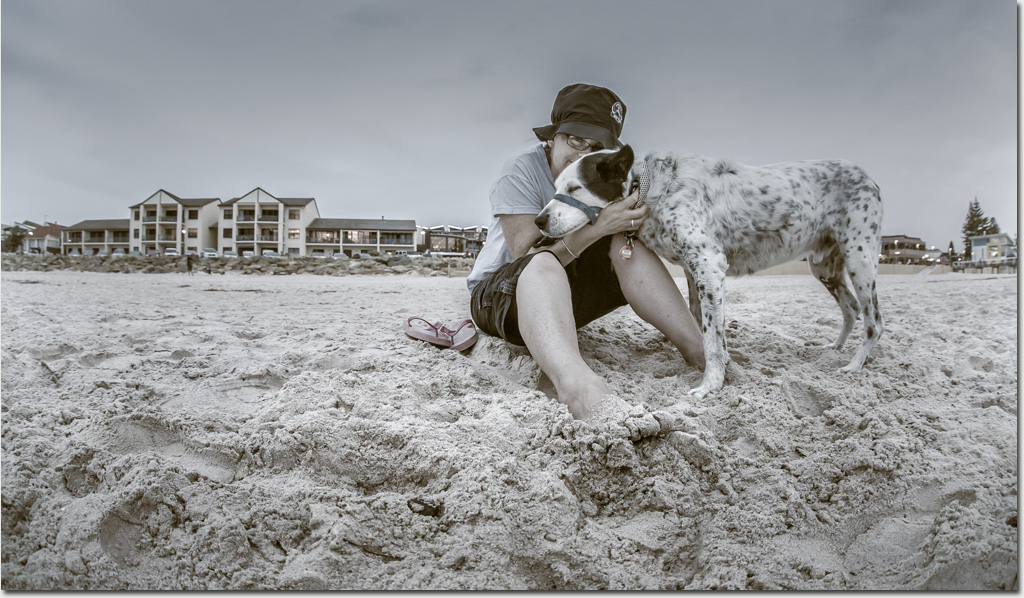
It was a grey day down at Henley Beach with the sunset buried behind an overcast sky.
Still there were no shortage of wonderful subjects with Jennifer and Tin Tin ready to take centre stage.
Tin Tin is our dog. At nearly 16 years old he is getting on okay having recovered from some major surgery last year.
We don't know how long he will be with us for but are grateful for every day.
Photo: Robert Rath, 'Day 753, Jennifer and Tin Tin' 1/13s f/7.1 ISO1000 15mm
Tuesday, January 21. 2014
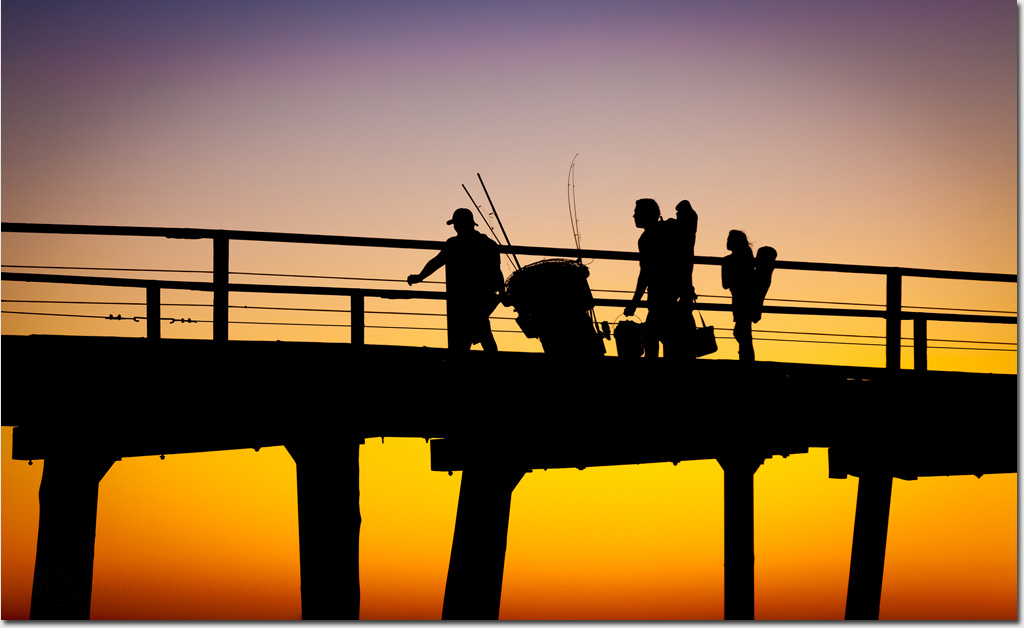
The glow in the western sky after sunset becomes a gorgeous backdrop for, well just about anything!
I wonder if these fishers caught anything more than a gorgeous sunset. Either way they should be just as content.
Photo: Robert Rath, 'Day 752, Western Afterglow' 1/250s f/2.8 ISO1600 200mm
Monday, January 20. 2014

This is about as far from a commercial wine shoot as you can get.
The lighting's crazy, the glasses are dirty and the background's a mess.
What else would expect. It's a party after all!
Photo: Robert Rath, 'Day 751, The Pie Man's Party Quaffer' 1/200s f/2.8 ISO1000 200mm
Sunday, January 19. 2014

Bright, colourful and cheerful. The first morning light echoed by symbolic yellow suns.
I wonder who, if any, will ride this ferris wheel today?
Photo: Robert Rath, 'Day 750, Capsule Colour' 1/800s f/2.8 ISO100 200mm
Saturday, January 18. 2014
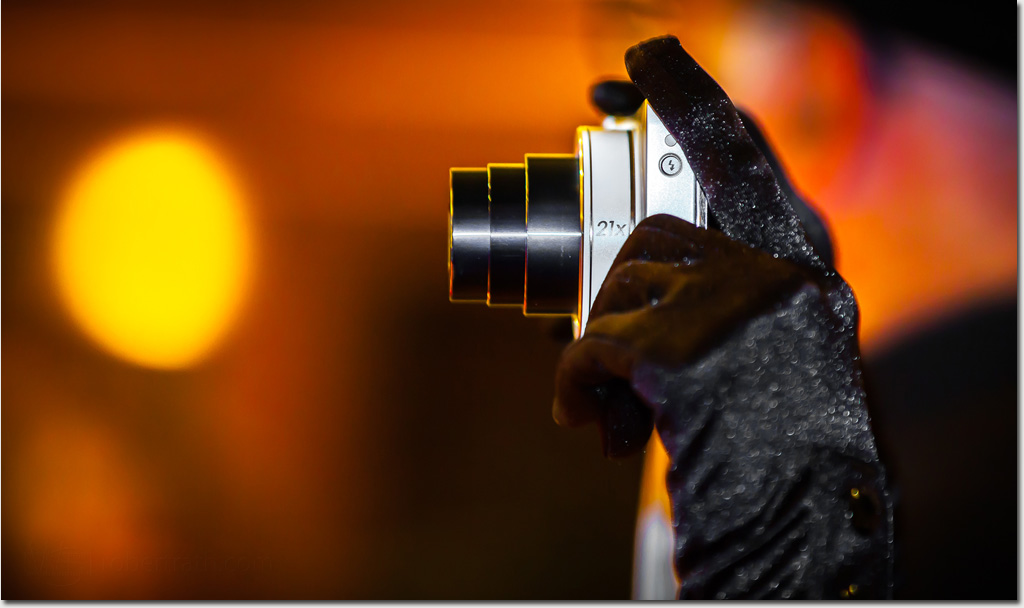
For us viewfinder, range finder and D/SLR image makers there is something odd about preview photography.
Watch any of the aforementioned and they will seem as if camera and image creator are one.
In this current popular style of photography the camera stands apart as if some magical object to be desired. Here being held by a pair of black velvet gloves, even more so.
Photo: Robert Rath, 'Day 749, Object of Desire' 1/20s f/2.8 ISO1000 200mm
Friday, January 17. 2014
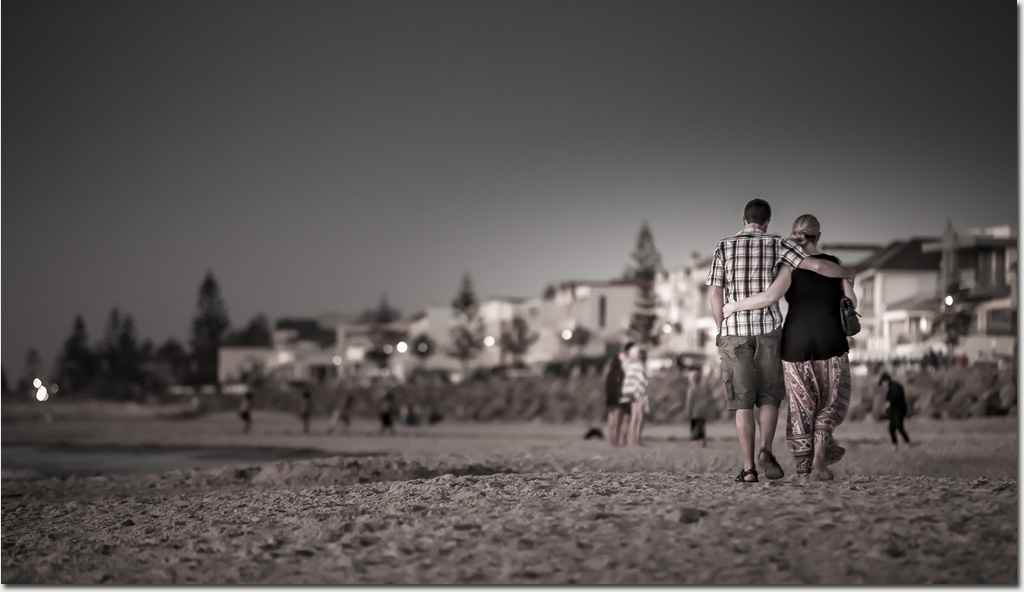
I do not know who's backs I have captured in this image. I simply liked they way they strolled by as if nothing else in the world mattered at all.
Photo: Robert Rath, 'Day 748, Nothing Else Matters' 1/25s f/2.8 ISO1600 200mm
Thursday, January 16. 2014
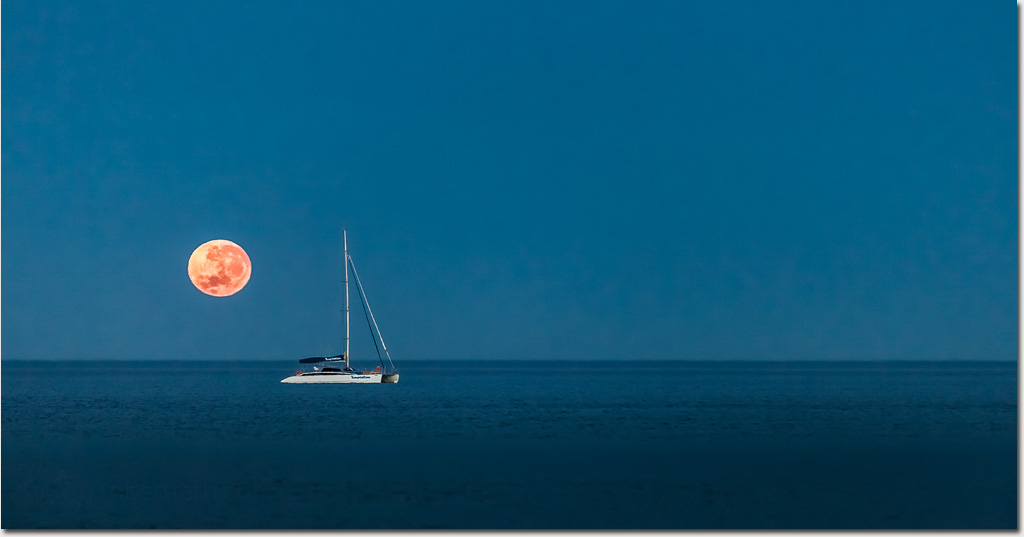
It's not often I get to see a full moon setting on the ocean. Perhaps that has something to do with my normal daily routine but this morning I had a reason to be up really early.
Just like the sun, when the moon is close to the horizon it appears squashed. Refraction starts to bend the light through the Earth's atmosphere, dims the light and blurs the features.
The real treat this morning was 'Temptation' sitting out in the gulf in just the right spot!
Photo: Robert Rath, 'Day 747, Temptation Moonset' 1/250s f/2.8 ISO1000 200mm
Wednesday, January 15. 2014
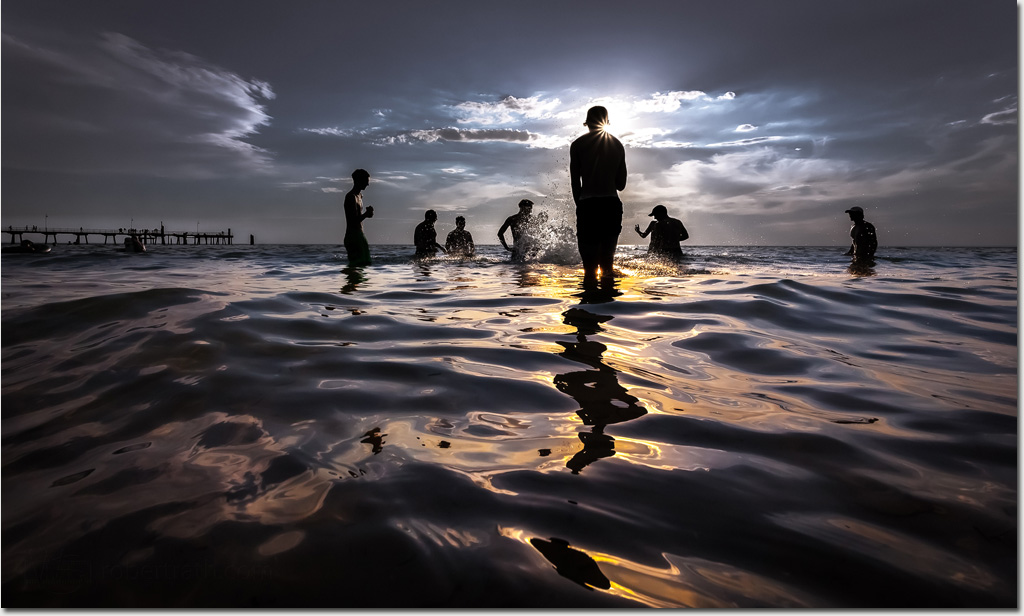
This sweltering heatwave of multiple days over 40 degrees C has made the beach a very special place to cool off.
The lapping calm water, and a searing breeze has made immersion in the cool salty brine more appealing than ever, unless you are too cool to get your hair wet or lose your baseball cap.
Photo: Robert Rath, 'Day 746, Too Cool To Be Cool' 1/2500s f/14 ISO320 17mm
Tuesday, January 14. 2014
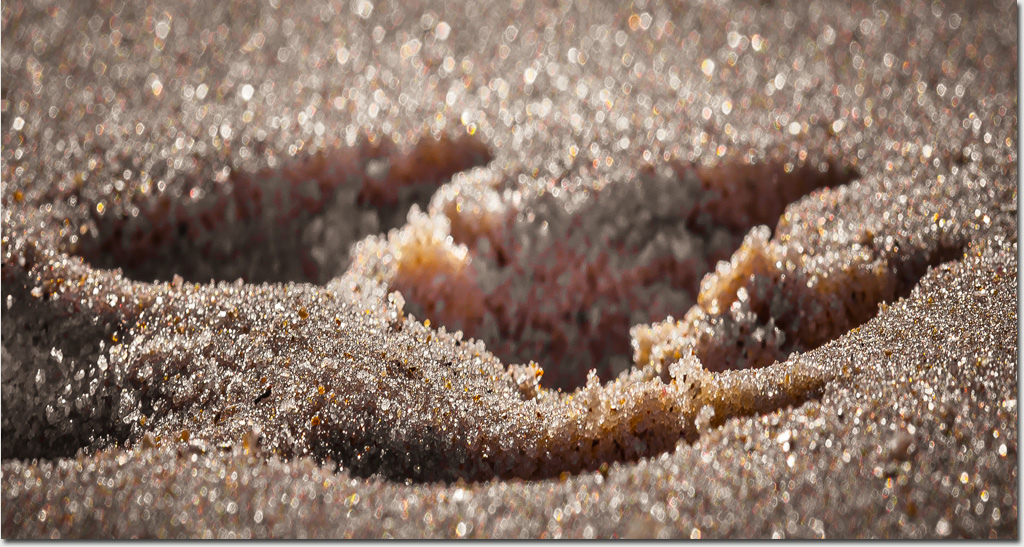
Head down to the beach in the early hours before the heat cranks up and you will find strange footprints in the sand.
As illusive as 'Big Foot' they will be gone again come the next high tide and leave us wondering if it they ever existed
Photo: Robert Rath, 'Day 745, Big Foot' 1/80s f/25 ISO100 100mm
Monday, January 13. 2014
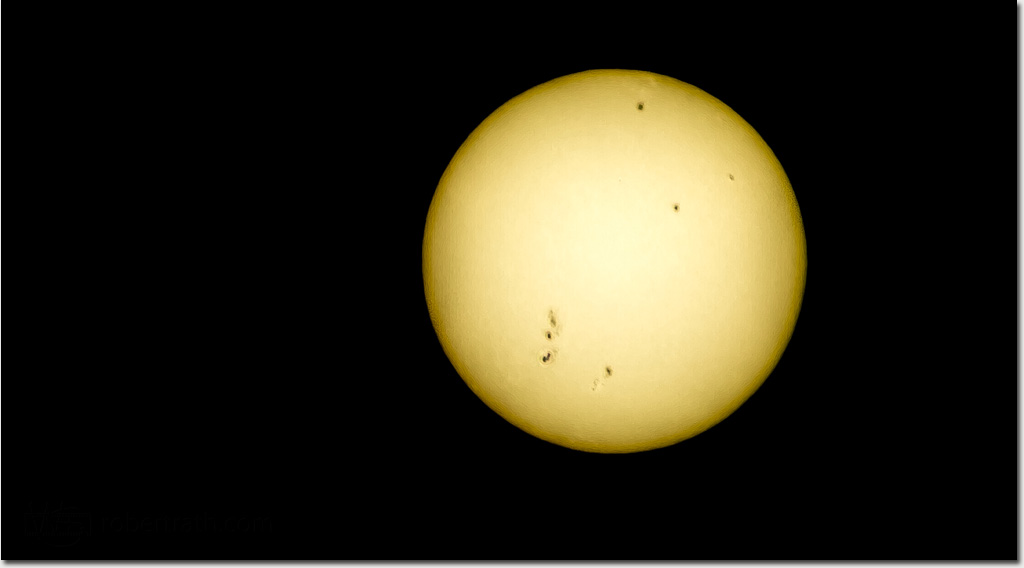
With the 42 degC onslaught this week I thought I'd capture an image consistent with the ongoing heatwave.
Sun-spots are obvious on the blemished surface as magnetic disturbances create cold spots and hence the dark visual blotches.
The hardest part about capturing the solar disk is actually getting it in focus. Even using the live-view preview and manual focus, the sun is just so bright it's hard to discern anything on the small screen in the bright sunlight.
Photo: Robert Rath, 'Day 744, Our Blemished Sun' 1/4000s f/16 ISO100 600mm +NDXXX
Sunday, January 12. 2014
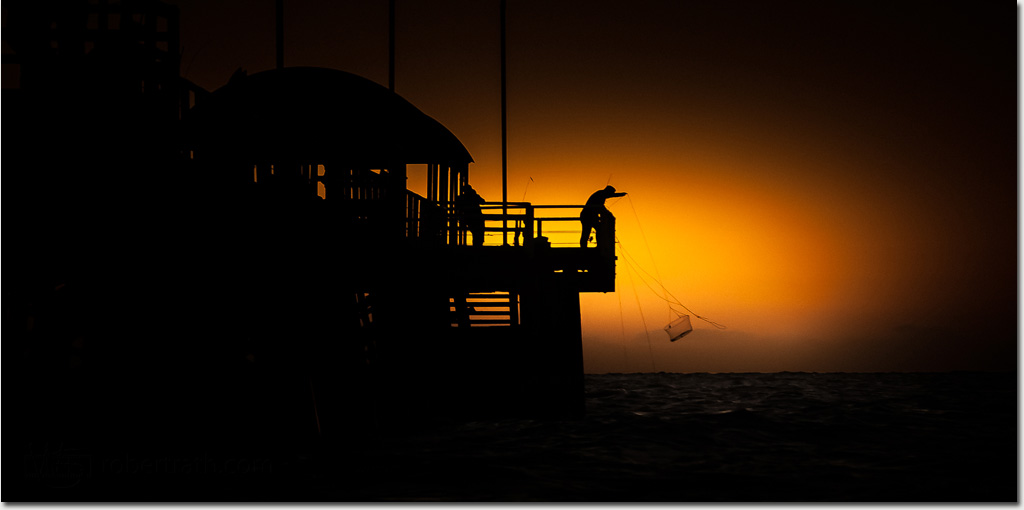
It never fails to amaze my how popular Adelaide jetties are with all manner of activities taking place.
During the day there are people out strolling, jetty jumpers risking life and limb and the odd casual fisher with a line or two cast to sea.
Once the sun has set and the last of twilight vanishes into night there is a distinct change. The jetty jumpers have gone, the strollers become far a few between.
Come days end the fishing becomes the serious business.
Photo: Robert Rath, 'Day 743, Day's End' 1/80s f/6.3 ISO1600 200mm
Saturday, January 11. 2014
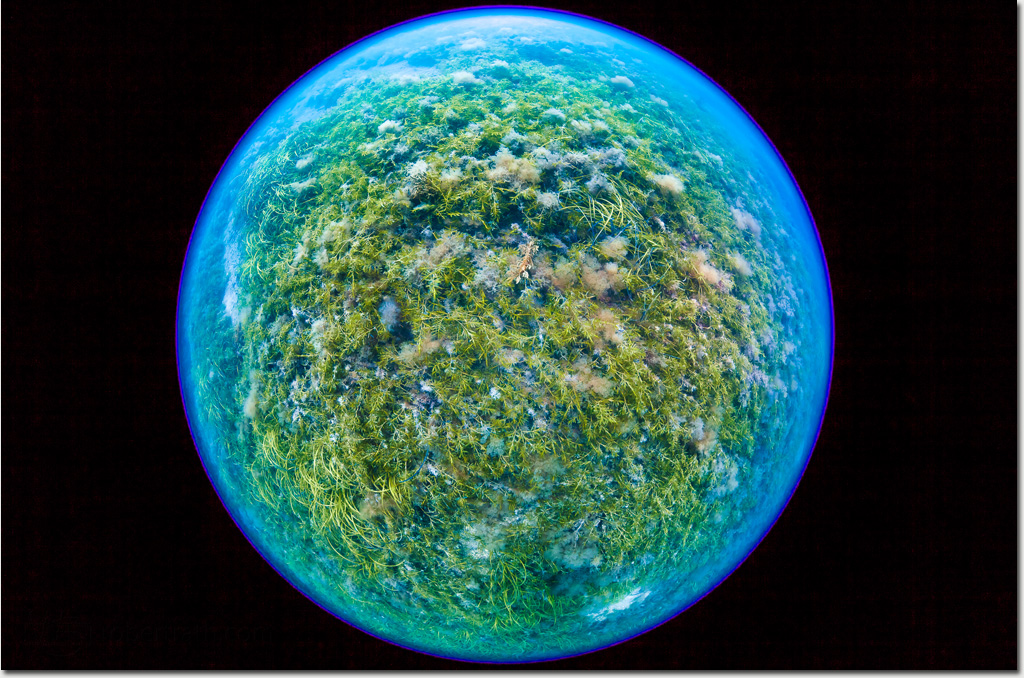
The planet 'Posidonia' is a hidden world where armored creatures lurk and dragons rule.
It exists only meters away from the world of men who sail past in boats or fish from jetties, most of whom will never see its beauty.
It is however a world beckoning to be explored by anyone willing to don mask, snorkel and fins and see it for themselves.
It you look carefully you just might even find a dragon!
Photo: Robert Rath, 'Day 742, Planet Posidonia' 1/50s f/8.0 ISO200 8mm
Friday, January 10. 2014
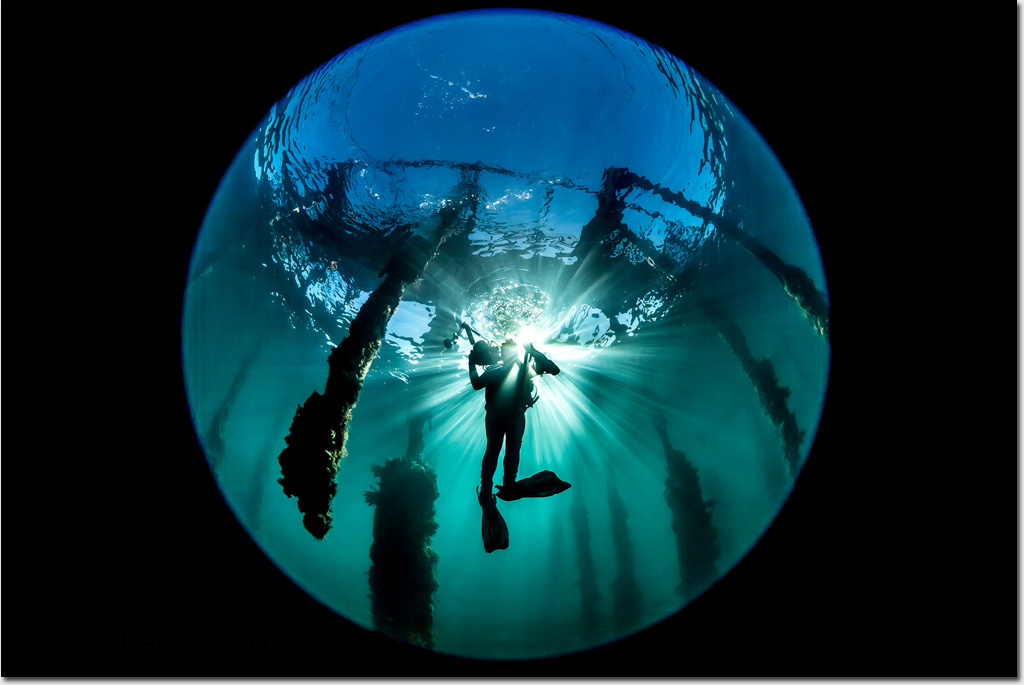
When it comes to wide-angle, it is hard to beat the 180 degrees of an 8mm FE lens.
This panoramic sphere has captured Liam's last descent before heading home following a week of diving and photographing Rapid Bay Jetty.
Liam lent me his 8-16 FE zoom for this dive. Not having the correct gearing in my housing I elected to fix the zoom at 8mm and just have some photographic fun.
Photo: Robert Rath, 'Day 741, The Big Descent' 1/400s f/11 ISO100 8mm
Thursday, January 9. 2014
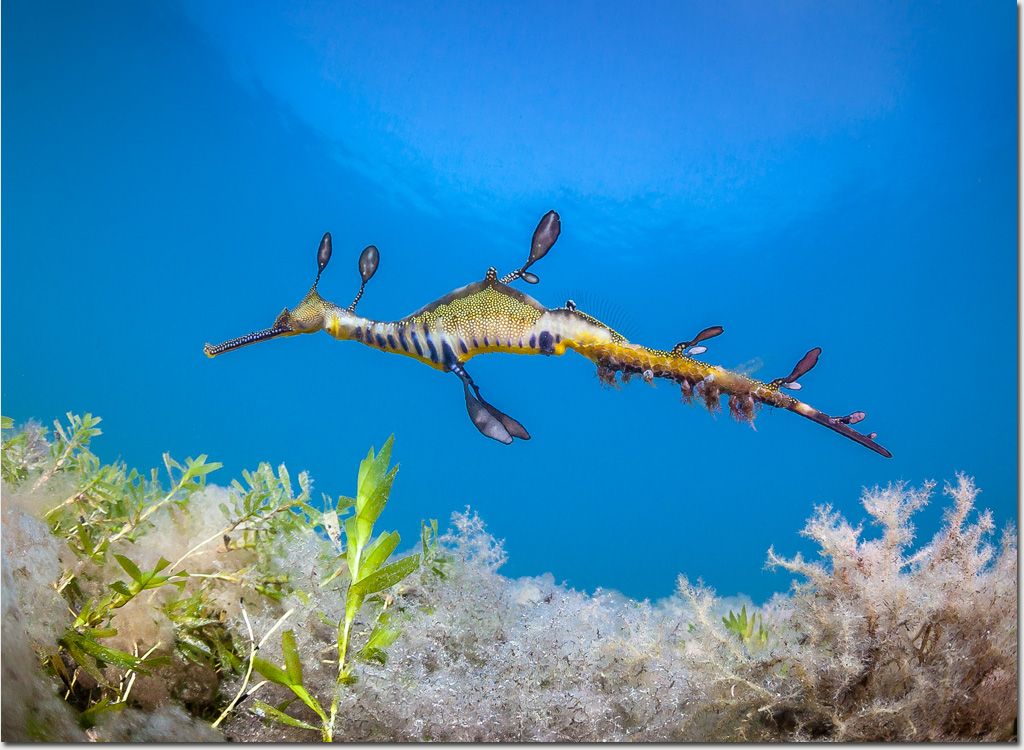
My first Weedy Seadragon, Phyllopteryx taeniolatus, for the year and this old boy has seen better days.
Although he is missing a few appendages the evidence of a recent clutch of eggs is testament to the fact that he's still got what it takes to win the ladies.
Weedy seadragons are not usually seen at Rapid Bay Jetty so finding this guy was a real treat for me today and comes after another batch of poor conditions which are finally clearing.
The coming few days are looking better and better so weekend divers should be in for real treat.
Photo: Robert Rath, 'Day 740, Still Got What It Takes' 1/160s f/8 ISO160 8mm
Wednesday, January 8. 2014
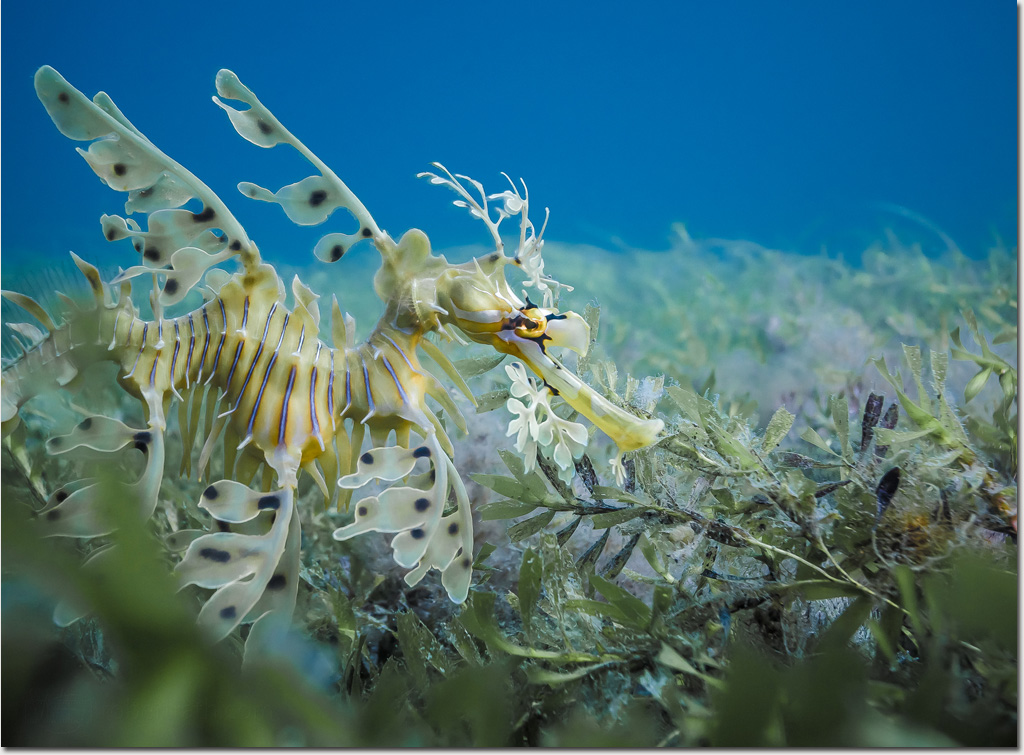
Finally the water has started to clear the weather is fining up and we found our perfect dragon. Is'nt she a beautiful creature!
Another 5:30am start for me but today was worth every part of the sleep deprived morning.
Liam and myself spent a good 30 minutes with this gorgeous female and she was not the slightest bit perturbed as she modeled for the camera.
Thanks to Nate from NB scuba for finding one of the most technically perfect Leafy Seadragons I have seen.
Photo: Robert Rath, 'Day 739, Beautiful Creature' 1/320s f/9 ISO320 40mm
Tuesday, January 7. 2014

Being a beach dweller I do not often think of making sunset images any where far from the sand.
This image is one of those rare exceptions taken from a vantage high in the Adelaide hills.
From here the gulf waters seem to smooth right out and appear like a mirror but the shape of the reflections tell a different story. If the sea was perfectly calm the rays of sunlight would be faithfully mirrored but instead they are translated into horizontal and vertical bands of light and shadow as only those random moments where the water surface is exactly horizontal to me all contribute to the beautifully textured water in this image.
Photo: Robert Rath, 'Day 738, The Gulf of St Vincent' 1/500s f/4 ISO100 105mm
Monday, January 6. 2014
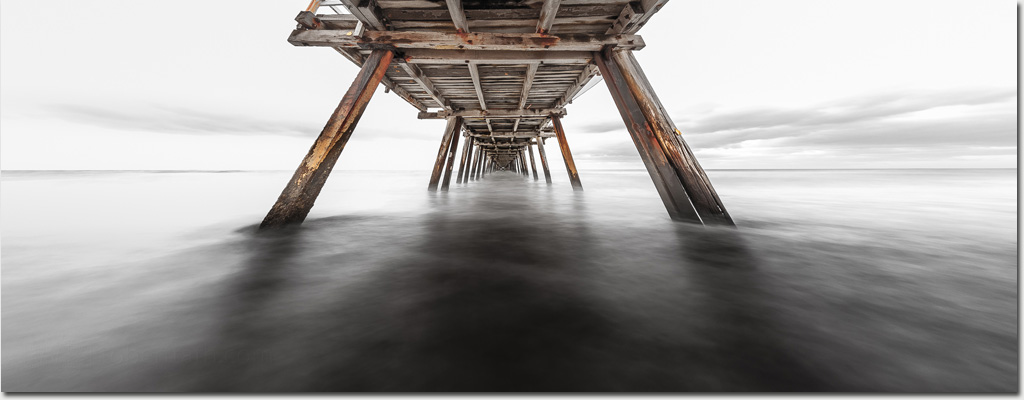
Our diving today was nothing short of hopeless photographically with 1m visibility, lost buddy procedures and various comical lost and founds while searching for leafy sea-dragons which were non-existent.
From a diving point of view it was however a heap of fun even if I did not even press the shutter once for the entire dive.
To make amends I decided to capture what was shaping up to be a great sunset but the colour fizzled out completely after the sun dipped below the horizon. Oh well, good old Henley Beach Jetty with here gorgeous legs comes to mye rescue again.
Photo: Robert Rath, 'Day 737, She's Got Legs Part Two' 8s f/16 ISO100 15mm
Sunday, January 5. 2014
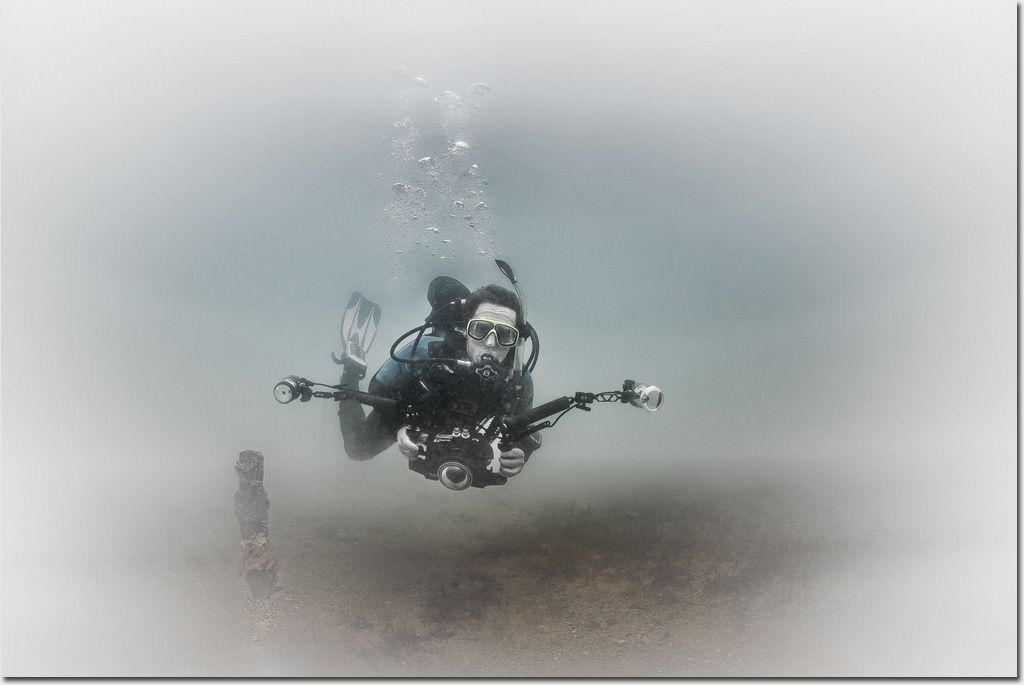
Underwater is such a narrow field of photography but even in this, my favorite niche, there is so much diversity.
I have always taken images of other divers but never really thought of then as environmental portraits before. Looking back of some of my work I am starting to realise just how much I like them.
Being geared up in diving equipment, regulator in mouth and mask on face does not make looking good easy so it's not about how good a diver looks but how good it looks to be a diver!
Thanks Liam for being both my dive buddy and model on this one! I think I'll be exploring this photographic niche within a niche with new enthusiasm to see where it leads.
Photo: Robert Rath, 'Day 736, Liam' 1/250 f/8.0 ISO320 15mm
Saturday, January 4. 2014
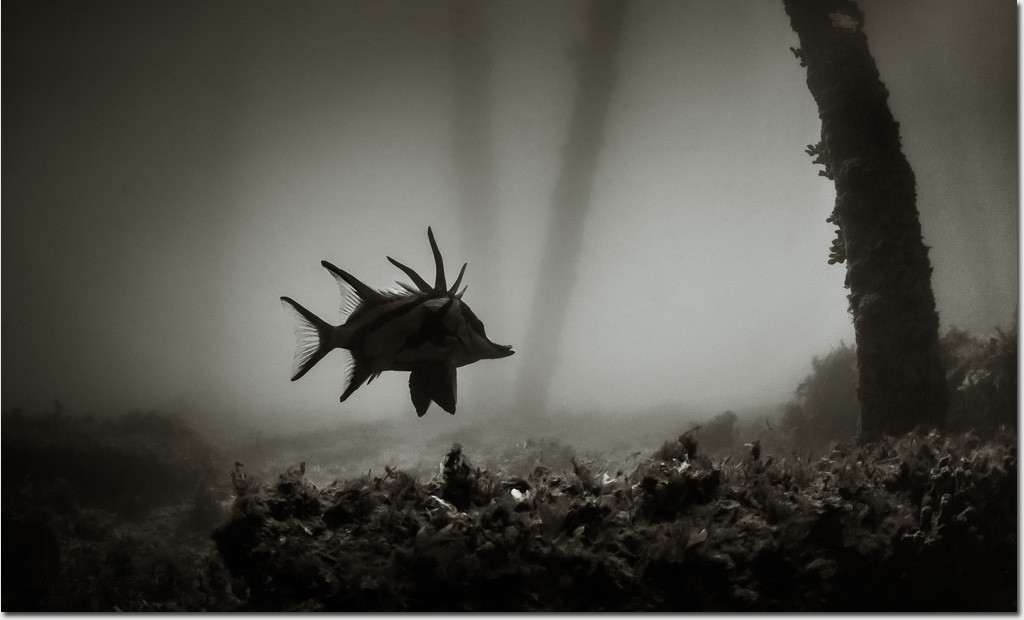
Today's dive at Rapid Bay with Liam was an exercise in reconnaissance.
Our mission was to locate a Leafy Seadragon but it was always going to be a challenge in the murky conditions.
Liam found his dragon and we were both treated to an uncommon visitor, a Longsnout Boarfish, Pentaceropsis recurvirostris
Conditions were not great for wide angle photography but we gave it our best anyway.
Photo: Robert Rath, 'Day 735, A Not So Boaring Profile' 1/800 f/8.0 ISO320 15mm
Friday, January 3. 2014
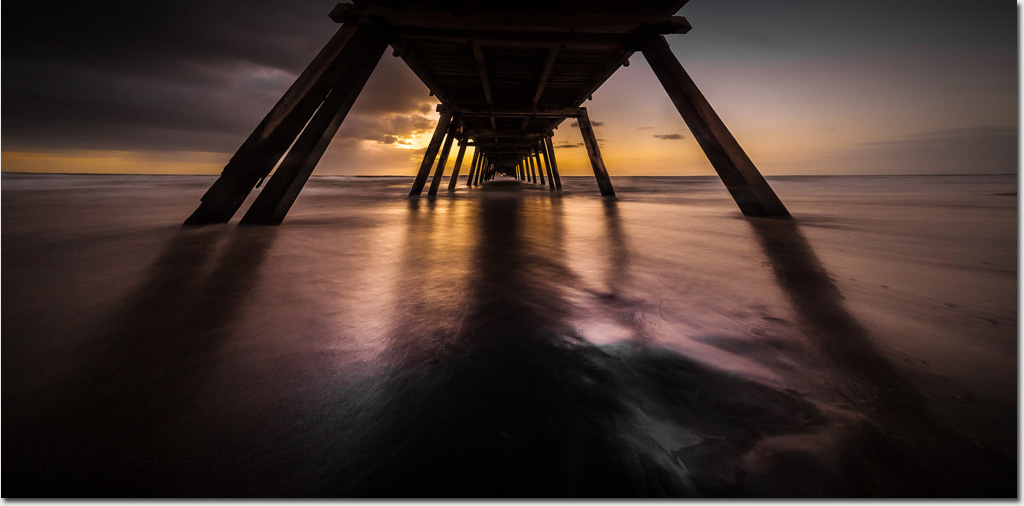
My first time down on the beach this year and of course I just had capture my local Henley Beach Jetty.
While down there a passer-by stopped to see what I was doing and to offer me some sage advise. Something about cameras being extremely allergic to saltwater I recall but I was too busy managing the the swirling tide around the legs of my tripod to pay him too much attention.
In some way the swirling wash around the legs of my tripod seemed the same as the swirling water around the legs of the jetty. It's just that she has more of them.
Photo: Robert Rath, 'Day 734, She's Got Legs' 4s f/16 ISO100 15mm
Thursday, January 2. 2014
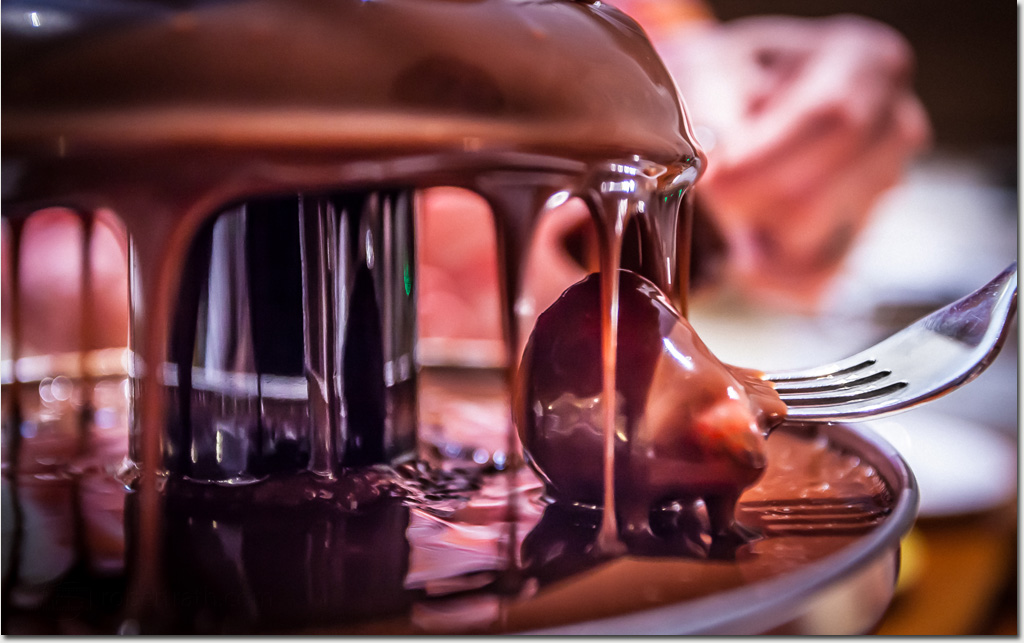
We began dessert thinking it was pretty good to coating strawberries and apples in gorgeous runny hot chocolate.
Then Christine brought out the Christmas panettone and suddenly the fondue became dessert heaven!
Photo: Robert Rath, 'Day 733, Fondue Heaven' 1/40s f/4 ISO2000 40mm
Wednesday, January 1. 2014
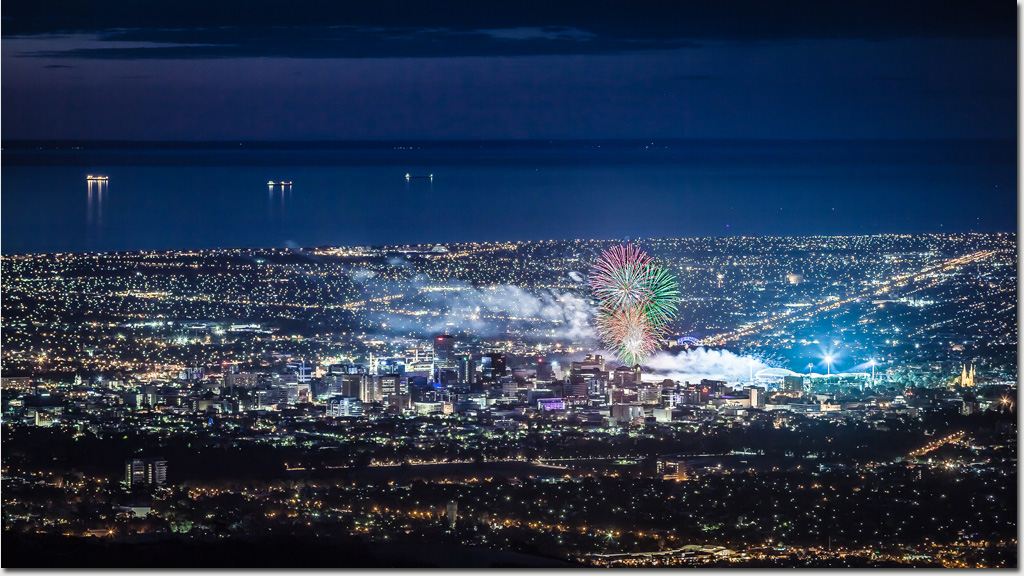
Happy New Year Adelaide 2014!
Wishing all of you out there in Adelaide and beyond and amazing 2014.
Photo: Robert Rath, 'Day 732, Happy New Year 2014' 4s f/7.1 ISO100 200mm
Tuesday, December 31. 2013
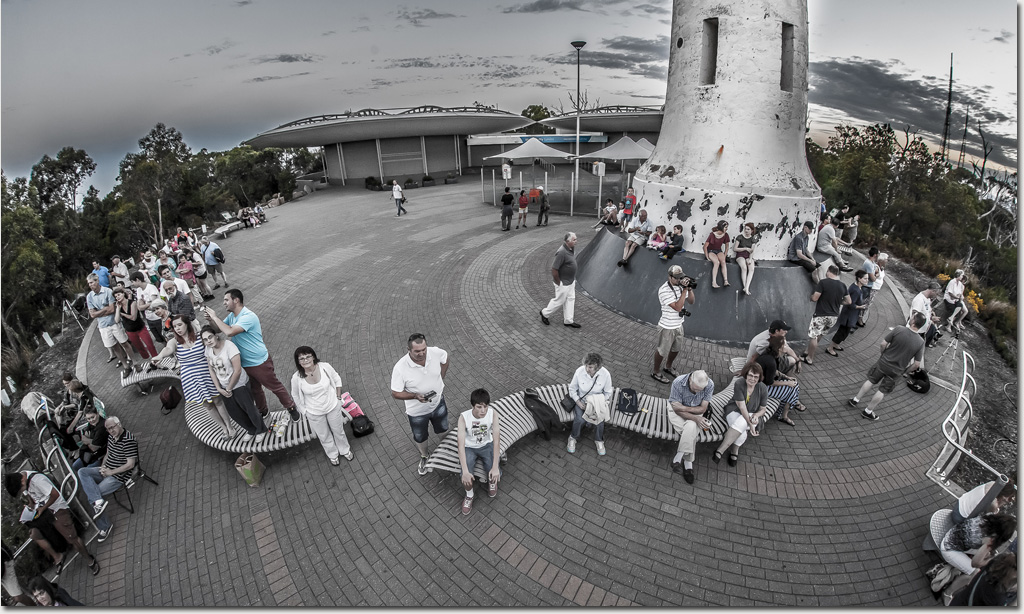
A small crowd has gathered at Adelaide highest vantage point, the top of Mount Lofty, to witness all of the fireworks which will unfold in and around Adelaide.
Yes, sure you get to see all of the fireworks from here but in actual fact they will only be very small twinkles in the distance compared to being right underneath them.
Still we are all here waiting so bring on midnight and the end of what has been an amazing 2013.
Photo: Robert Rath, 'Day 731, Waiting For Midnight' 1/40s f/7.1 ISO1600 15mm
Monday, December 30. 2013
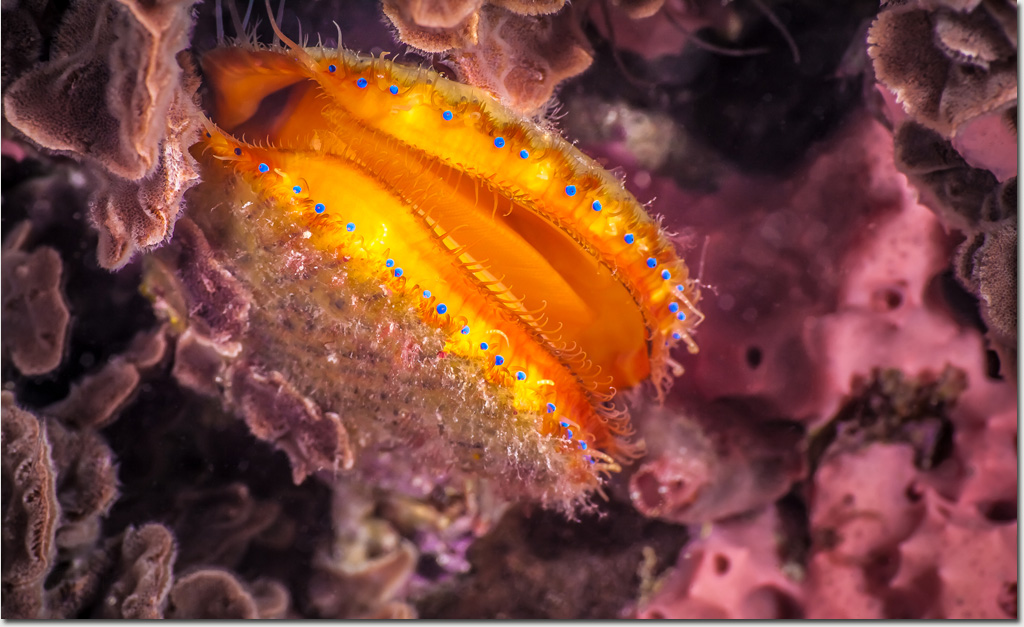
If deep blue eyes are supposed to be alluring then the Doughboy Scallop, Mimachlamys asperrima, would be the most alluring of all.
Also known as a sponge scallops this species rarely finds its way onto restaurant plates. Unlike commercial varieties which are collected from sandy bottoms, this scallop chooses a sessile life covered in sponge and coral attached to reefy habitat. This one under Port Hughes Jetty must only be couch surfing because it is surprisingly devoid of spongy growth.
As for those gorgeous blue eyes, well you tell me what you think!
Photo: Robert Rath, 'Day 730, Blue Eyes' 1/100s f/18 ISO320 100mm
Sunday, December 29. 2013
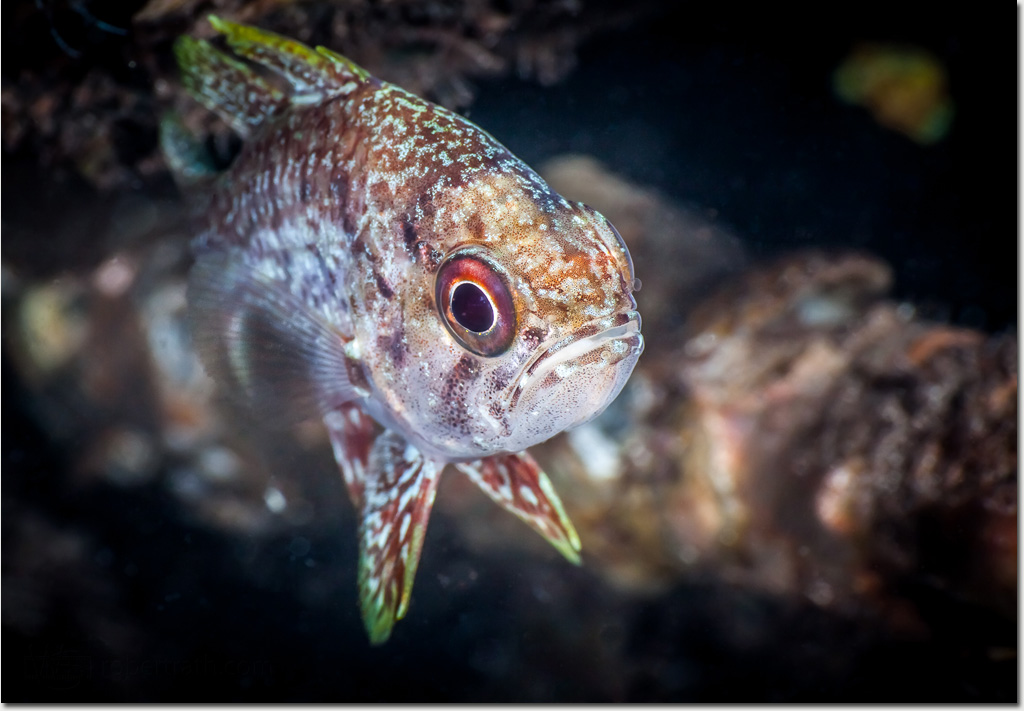
The Southern Cardinalfish, Vincentia conspersa, is one of the 'usual suspects' lining up under South Australian jetties.
What is unusual about this fish and its close relatives is that the male is completely responsible for brooding the eggs until hatching.
During brooding the male will keep the clutch of eggs in it's mouth and not eat until they have hatched.
This guy under Pt Hughes jetty is clearly single and out for a good time.
Photo: Robert Rath, 'Day 729, The Cardinal' 1/100s f/18 ISO320 100mm
Saturday, December 28. 2013
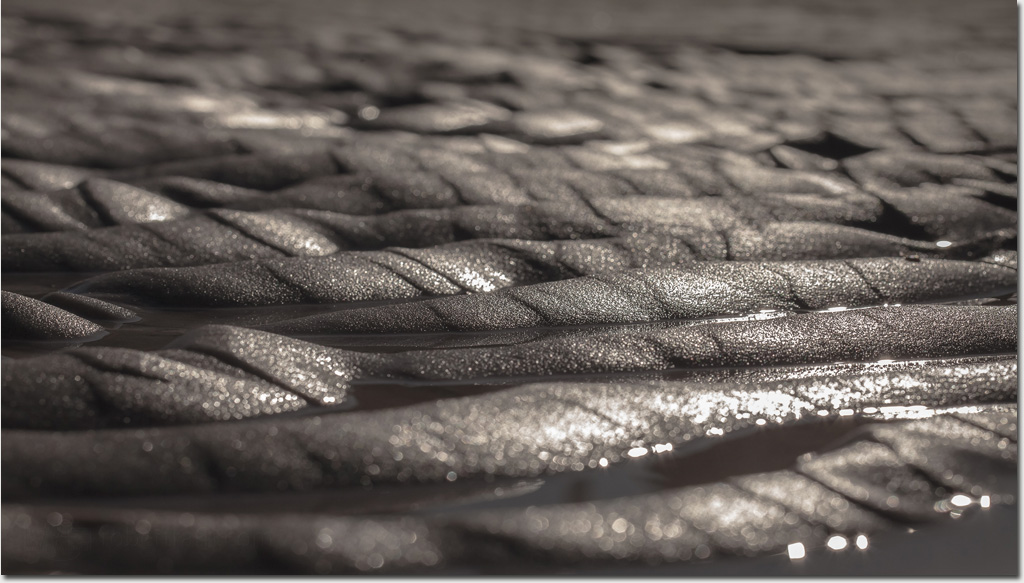
Looking at this sandy patch I saw bolts of yellow-grey cloth half unraveled and soaked through.
This could have easily been the aftermath of some torrential flood devastated textile factory.
Fortunately for everyone it's just low tide at Henley Beach.
Photo: Robert Rath, 'Day 728, Textile Texture' 1/6400s f/11 ISO320 100mm
Friday, December 27. 2013

Capturing moving water at high speed results in some very surreal images.
Watching a fountain and its never ending transitions as the movement takes on a life of its own is mesmerizing. You can however never see the kinds of images that high speed can capture.
Unlike frozen water, a high speed capture shows curves and textures and a sense of movement frozen in time, not in ice.
Photo: Robert Rath, ‘Day 727 Water Dance' 1/8000s f/4.0 ISO125 200mm
Thursday, December 26. 2013
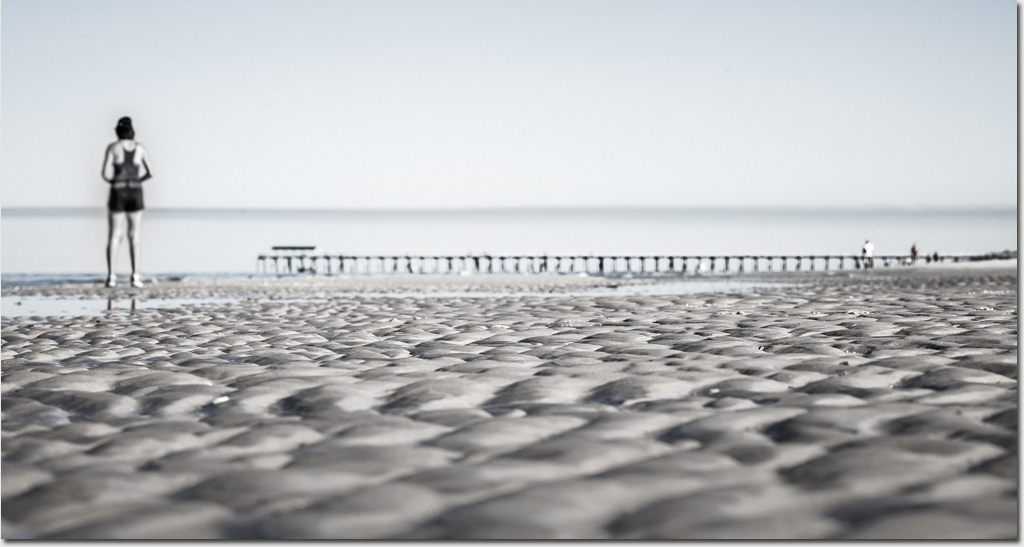
The outgoing Grange tide leaves wonderful patterns in the sand for walkers to explorer and admire.
I could not tell if this runner was looking at anything in particular as she gazed off into the distance. Perhaps she did not even notice the deep sandy textures though I am sure here ankles would bring them to her attention when she took off again.
The tide will come back in in a few hours and all this will be hidden for another cycle.
Photo: Robert Rath, ‘Day 726, Waiting For The Tide' 1/640s f/11 ISO320 100mm
Wednesday, December 25. 2013
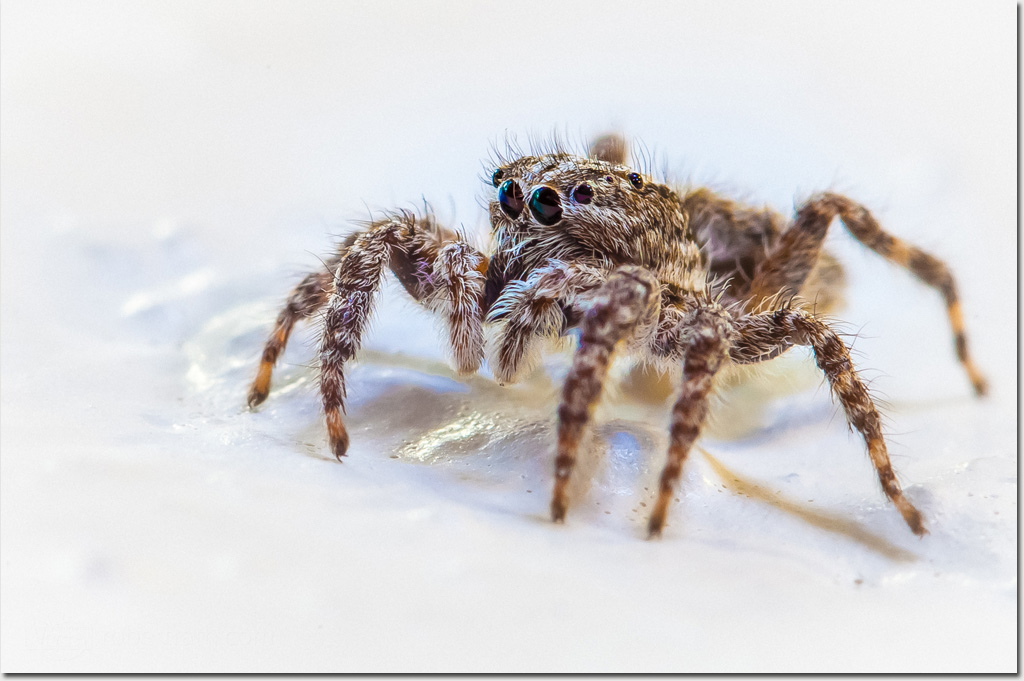
Of all the spiders we find around our home, these little guys seem least threatening, almost as cute if one could use that term to describe an arachnid.
Jumping spiders are aptly named and will make frog like leaps covering hundreds of times their own size. I think this in combination with their tight jerky movements makes them seem less like a spider and more like a playful kitten, albeit a kitten with eight eyes!
Photo: Robert Rath, ‘Day 725, Eight Eyed Kitten' 1.3s f/16 ISO800 200mm
Tuesday, December 24. 2013
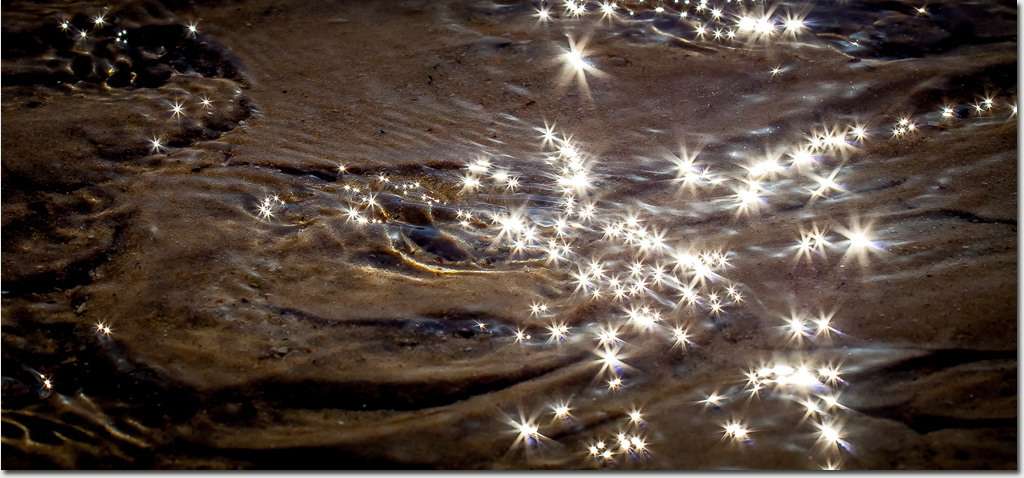
In the local sandy shallows of Henley Beach we do not often see sea stars. They are typically more common in the richer reefy coastline to the south.
With a little change in perspective however I began noticing them everywhere!!
Photo: Robert Rath, ‘Day 724, Sea Stars' 1/2000s f/18 ISO320 100mm
|

































